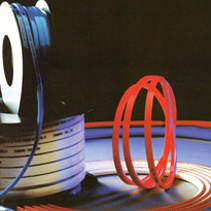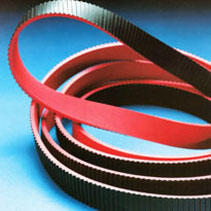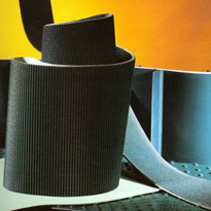
- Round Belt (∅3mm - ∅20mm)
- PU V-Belt (Z, A, B, C, D)
- Ridge Top V-Belt (A, B, C)
- Rough Top V-Belt (A, B, C)

- Timing Belt with Coating

- PU (open end & endless belt)
- Neoprene Rubber (endless)


A conveyor belt is a mechanical device that is used to transport items or materials from one location to another. It consists of a continuous belt made of rubber, fabric, or metal that rotates around a series of rollers or pulleys. Conveyor belts are commonly used in manufacturing, mining, food processing, transportation, and other industries.
Conveyor belts come in various sizes, shapes, and types depending on the application. Some common types of conveyor belts include flat belts, modular belts, cleated belts, and wire mesh belts. Flat belts are made of a single layer of material and are commonly used for transporting light to medium-weight loads. Modular belts consist of interlocking plastic or metal segments and are used for transporting heavier loads. Cleated belts have raised sections or cleats along the belt to help keep items in place, and wire mesh belts are made of interwoven metal wire and are used for high-temperature applications.
Conveyor belts have several advantages over other types of transportation systems. They are cost-effective, energy-efficient, and can transport a large number of items quickly and efficiently. They also require minimal maintenance and can be automated to reduce the need for manual labour.
However, conveyor belts can also pose certain risks and hazards if not properly maintained or operated. Loose clothing, hair, or jewellery can become entangled in the moving parts, causing injury or even death. Items can also fall off the belt, causing damage or injury to people or equipment. Proper training and safety procedures must be followed to ensure that the conveyor belt is operated safely.
In conclusion, conveyor belts are an important tool for transporting items and materials in various industries. They offer several advantages over other types of transportation systems, but also require proper maintenance and safety measures to prevent accidents and injuries. As technology continues to advance, conveyor belts are likely to become even more efficient and versatile, making them an indispensable part of many industries.

















